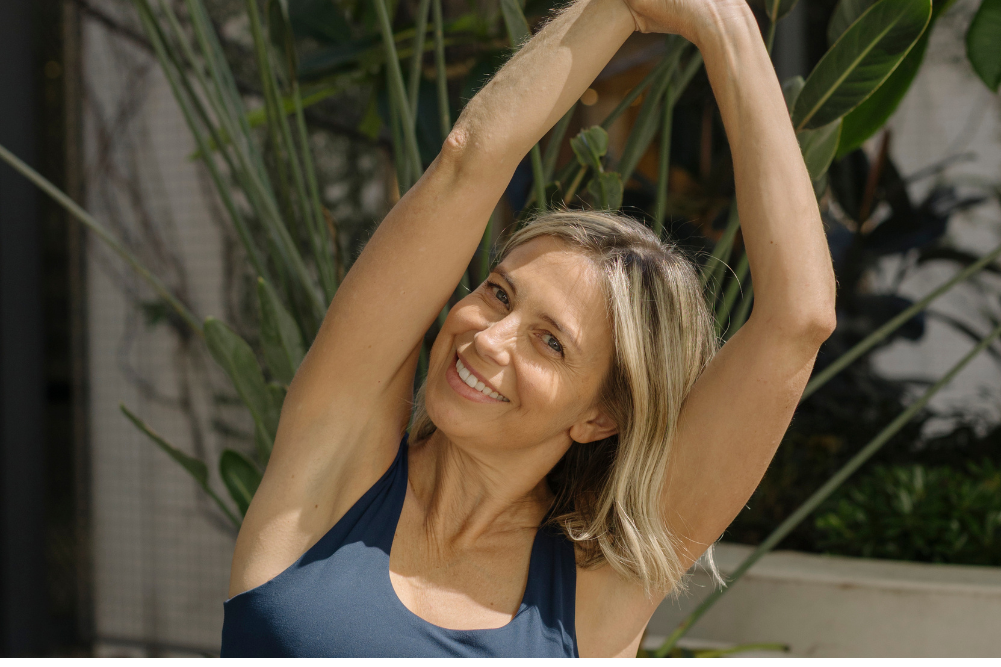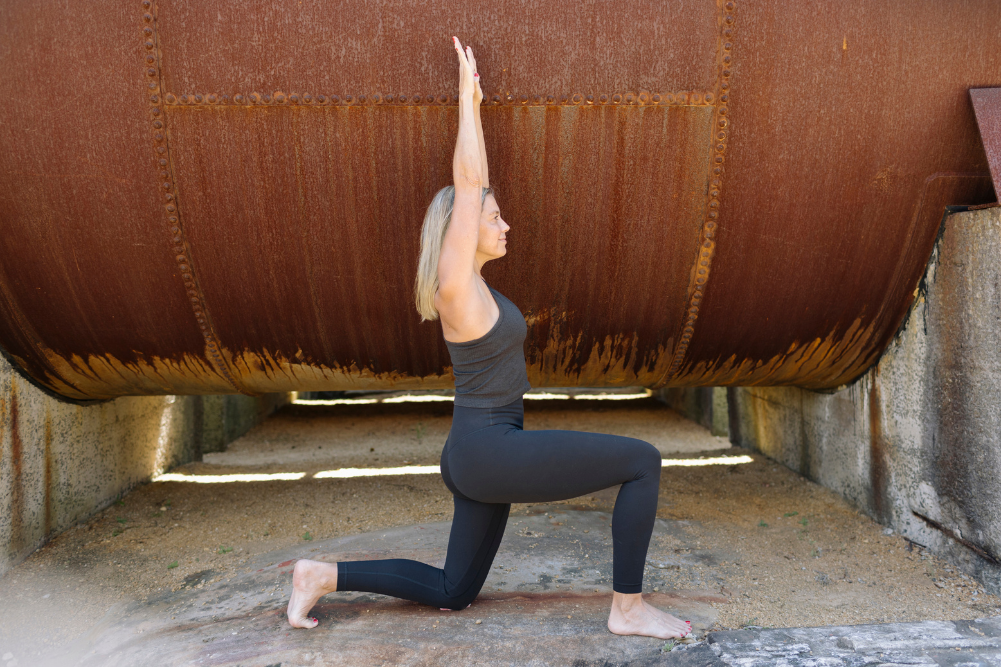What is kundalini yoga?
“Somewhere inside of me a creative genius is just dying to get out.” How many of us have thought this or a version of it? The ultimate desire may differ — you may want to be a master chef, sublime parent, compassionate healer or just a better person — but the essence is the same: many of us are halfway along the path to being the person we believe we are meant to be. Taking that last part of the journey, where we are able to unlock our full potential, however, can sometimes feel like a bewildering task.
Followers of kundalini yoga, which had its genesis in 1969 when Yogi Bhajan first introduced the concept to Western audiences, believe the secret can be found in the practice of a holistic form of yoga that encompasses a focus on breath, poses, chanting and meditation, ultimately leading the practitioner to their true self.
The word “kundalini” translates as “the curl of the lock of hair of the beloved”, which, if you visualise this curl sitting at the base of all the chakras, becomes a poetic metaphor to describe the flow of energy and unconsciousness that the practice unlocks within the practitioner.
Breath
Yogic breathing is also known as pranayama. Prana means breath or life force and yama means natural law. When we alter our breathing patterns, we can begin to release habitual patterns of emotion that become “coded” at a cellular level in the body and mind. Pranayam is the science of breath. It is all about controlling the movement of prana or breath through the use of breathing techniques. Kundalini yoga employs a wide range of pranayam, utilising the rhythm and depth of the breath to affect and manage different states of health, wellness, consciousness and emotion. We use our breath in a specific way, which mixes the prana and apana in the central channel through our breath and bandhas or locks to balance our mind and body.
Yogi Bhajan taught that the mind follows the breath. The key to controlling the mind is in controlling the breath. Some of the breathing techniques use in kundalini yoga include:
1. Breath of fire. This is a rapid two to three breaths per second through the nose, pumping from the navel point. With this breath, the inhalation and exhalation are equal and there is no pause between them. One of the best ways to get a sense of this breath is to think of a dog panting with an open mouth. You can practise it now.
Open your mouth and stick out your tongue and practise breathing in and out by pumping your navel centre. Now practise this same breath by breathing through your nose with your mouth closed. In most cases, unless otherwise taught, breath of fire is done with closed mouth, breathing through the nose. Start with one minute and build up slowly. While pregnant or menstruating, substitute long, deep breathing for breath of fire.
The breath of fire cleanses the blood, the mucous lining of the lungs and all the cells. It helps to expand the lung capacity. It warms and rejuvenates the body and increases oxygen delivery to the brain, thus rejuvenating the brain’s neurons.
2. Long, deep breathing. By taking deep yogic breaths you can expand your lungs to about eight times their normal size by breathing into your belly, diaphragm and upper lungs. Each part of the breath expansion is distinct. When all three areas are combined, you have a complete long, deep breath.
Sit straight and begin to inhale into your abdomen. The breath will expand each area. Then move the breath up to your diaphragm or chest area and then finish with your breath reaching up to your clavicle bones. Start your exhalation by relaxing the clavicle, then slowly releasing the breath in your chest and, finally, the abdomen goes in to force out any remaining air.
This breathing stimulates the brain chemicals known as endorphins that help fight depression. It helps you to feel calmer, helps to regulate the body’s pH balance and it energises and increases vitality.
3. Alternative nostril breathing. The simple mechanism of closing or opening one of the nostrils exercises the two sides of the brain. The left hemisphere is connected to the right nostril and the right hemisphere to the left nostril.
Sit with a straight spine and use the thumb of the right hand to close the right nostril and the index finger or ring finger of the right hand to close the left nostril. Close the right nostril and gently inhale fully through the left nostril. Then close the left nostril and exhale through the right nostril. Then inhale through the right nostril. Close the right nostril and exhale through the left, and continue repeating this pattern. Start at one minute then increase the time as it feels appropriate.
Blocking the right nostril and breathing out of the left nostril is associated with calmness, empathy, the moon energy and sensitivity. Blocking the left nostril and breathing through the right helps to create concentration, willpower and alertness and gives you a clear, focused mind. This breathing technique creates whole brain functioning by balancing both hemispheres. It is both integrating and grounding and leads to a deeper sense of wellbeing and harmony on all levels.
Everything in kundalini yoga is done in a specific order and time frame for optimum results. Your eyes are closed during the class and focused at the brow point, or Third Eye, unless otherwise instructed. This works directly on the pituitary gland (master gland) and intuitive centre or chakra.
Chanting
Chanting in some form was practised in many ancient civilisations. In kundalini yoga, chanting a sound vibration (mantra) is used to connect with both the higher self and the lineage of this ancient art. According to yogic knowledge, when a sound’s innate vibration corresponds to or in some way reproduces what it refers to, it is sacred language. It’s believed that chanting certain ancient syllables is the fastest path to vibratory union with the universal consciousness.
When your tongue touches the top of your palate as you chant, it connects with 84 meridian points on the roof of your mouth. These points are like a computer keyboard, the computer being the hypothalamus in the brain, which connects with the pituitary and pineal glands and controls most of our body functions. It’s believed that, when we chant, it adjusts the functioning of the endocrine system and the metabolism to achieve a neutral, balanced mind and strengthen the immune function.
It’s also believed that when we chant we create a vibration that goes out to all of our cells, allowing the subconscious mind to dump, cleanse and release old patterning, in turn helping to bring about clarity of mind.
Chronic stress plays a big part in affecting our glands and chakras as well as other body systems. We age much faster if we put too much mental, emotional and physical stress on our systems. Who we are, what we think about, how we feel and the way we breathe all affect our endocrine system.
Along with chanting, any of the meditations in which we mentally stare at the tip of the nose stimulate the pituitary gland and the entire glandular system. When we focus on the brow point, or Third Eye, we are stimulating the pituitary gland. When we put our focus on the crown chakra, we are stimulating the pineal gland. When we work with breath and specific postures that affect the chest area including the sternum, we are stimulating the thymus gland. Each chakra we work with has a direct correlation to our endocrine system.
Postures
In kundalini yoga there are specific kriyas, or sequences of postures and meditations, that have a direct effect on the physical, mental, emotional and spiritual body. Yogi Bhajan taught and introduced thousands of different kriyas, including those for a healthy digestive system, for releasing inner anger, for supporting the kidneys, adrenal glands and immune system, for balancing the aura, for helping the nervous system, for increasing tolerance and to balance all the chakras, just to name a few.
Teachers of kundalini yoga wear white as it is the “infinite” colour and is psychologically uplifting. They cover their heads with a natural fibre cloth, preferably cotton, as it holds the electromagnetic energy field and enhances the meditative mind.
Basic class format
The format of a kundalini yoga class follows a similar pathway each time. Every class starts with everyone rubbing their hands together and placing them in prayer pose at the sternum. The class then takes three deep breaths and tunes in with the Adi Mantra, which translates to “I bow to the infinite wisdom within.” Chanting this mantra three times connects us to the “golden chain of teachers” that have come before us. This helps us to feel more supported and uplifted in our yogic practice.
There are usually warm-up exercises to begin the class, followed by a particular kriya, pranayama, relaxation and meditation.
While practising kundalini yoga, we silently chant Sat Nam, sat with the inhalation and nam with the exhalation, which translates to “Truth is my identity.” Each class finishes chanting a long sat and short nam and the long-time sun song, which is: “May the long-time sun shine upon you, all love surround you, and the pure light within you guide your way on.”
The following kundalini yoga kriya is very powerful for uplifting your state of consciousness.
Kirtan kriya
This meditation process from Yogi Bhajan combines sound vibration (chanting) with hand positions (mudras). Each sound and each hand position has a different meaning and benefit for the body, mind and spirit. Kirtan kriya helps to bring a balance to the psyche. Connecting with each fingertip alternates the electrical polarities. The index and ring fingers are electrically negative, relative to the other fingers. This causes a balance in the electromagnetic projection of the aura.
Sit comfortably and rest your hands on your knees or lap. Close your eyes and focus internally on the brow point. Begin this kriya chanting in a normal voice for three to five minutes, then in a whisper for three to five minutes, then silently for seven to 10 minutes. Return to a whisper for three to five minutes and then chant out loud for another three to five minutes.
The time frame can be shortened if need be, as long as it is done in this order and the out-loud and whisper portions are half the silent time each way.
These below primal sounds are known as the cycle of creation. From the infinite comes life and individual existence. From life comes death or change. From death comes rebirth of consciousness to the joy of the infinite.”
Primal sounds:
Saa means infinity, cosmos, beginning
Taa means life, existence
Naa means death, change, transformation
These mudras or hand positions work with the sounds in the following ways:
- When you chant the sound saa, touch your first finger or index finger with your thumb. This relates to knowledge.
- When you chant taa, touch your second finger with your thumb. This relates to wisdom, patience and intelligence.
- When you chant the sound naa, touch your third finger or ring finger with your thumb. This relates to vitality and energy of life.
- When you chant the sound maa, touch your fourth finger or little finger with your thumb. This relates to the ability to communicate.
You practise these mudras with both hands at the same time.
The ways in which we chant the sounds relate to the languages of our consciousness. Our normal out-loud voice relates to our human self, which is the world. Our whisper relates to the lover within and our longing to belong. When we silently chant we are connecting to our divine self and to infinity.
In this very busy world we live in, it’s vitally important to stay as balanced and calm as we can. The whole purpose of yoga is to make changes from the inside out. If we are peaceful from within, we handle outside stressors much more positively.
The following kundalini yoga meditation will help you to feel peaceful and calm from the inside out.
Picture of Calm meditation practice
Sit with your spine straight and cross-legged or in whatever position is comfortable for you. Close your eyes and bring your internal focus to your brow point, or Third Eye. Bring both hands to your heart centre or middle of your chest with one hand on top of the other. Allow yourself to go into a deep meditation. Take some long, deep breaths and just let go of anything bothering you. Focus your attention on your heart and on the love for others and the love for yourself.
Continue for up to eight minutes or longer if need be. When you are finished, inhale and exhale fully and take a few minutes to relax and notice how you are feeling after this meditation. This is good to do any time but especially when you want to feel calm and balanced. It’s also good to do this before your regular meditation practice or before bed to help you sleep more deeply.
Laurie Leah Levine is a certified kundalini yoga teacher, healer, author, marriage celebrant and spiritual teacher in Sydney, Australia. E: laurielevine@optusnet.com.au, W:www.laurielevine.com, www.kundaliniyoga.com.au.







